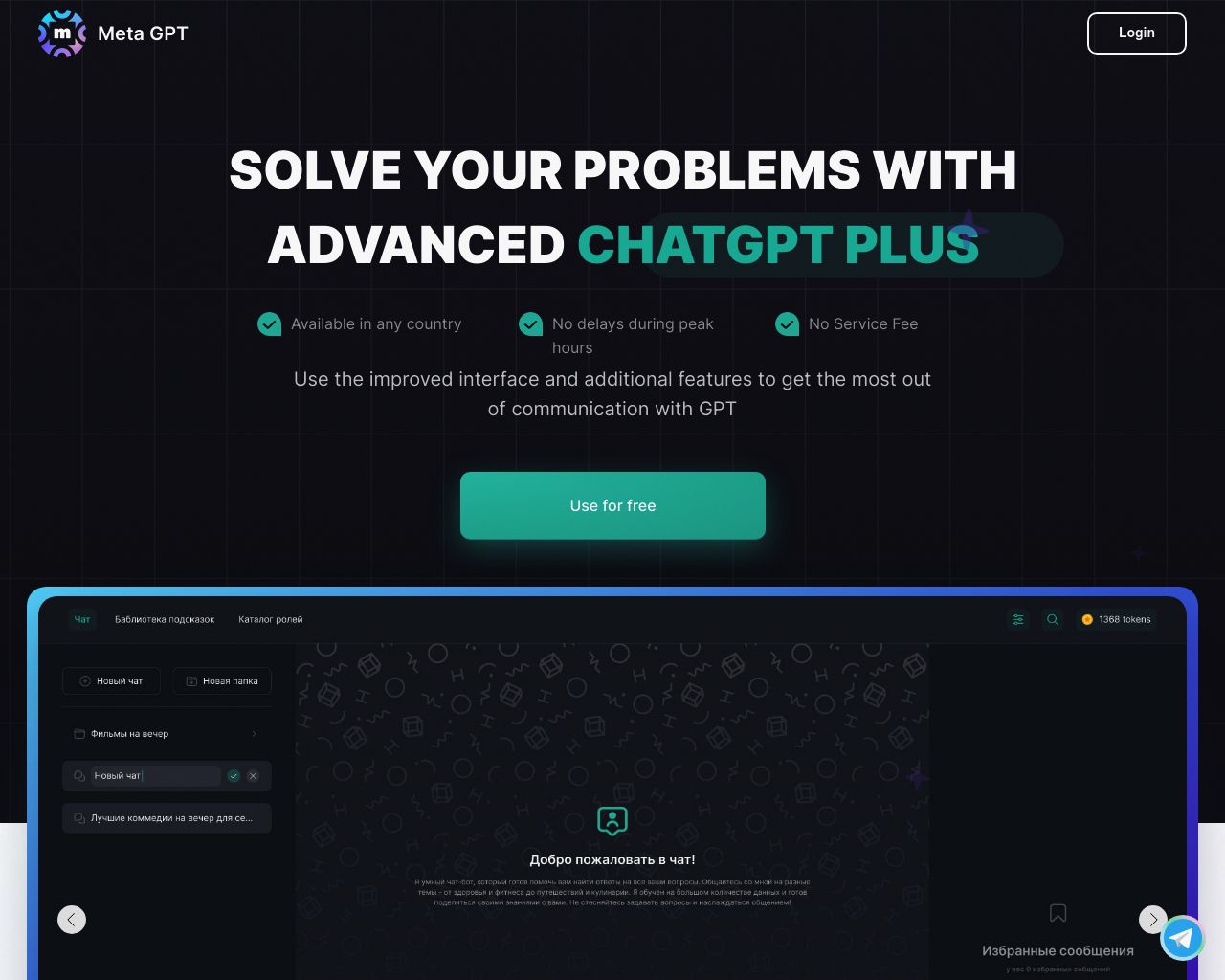Botsonic/Writesonic vs. MetaGPT: AI Agents Compared
AI-powered agent development platforms are reshaping how businesses interact with customers and manage complex tasks. Botsonic/Writesonic simplifies chatbot creation for customer service and lead generation, while MetaGPT simulates software company structures for intricate development projects. This comparison explores their unique approaches, highlighting strengths and limitations. We’ll examine how SmythOS bridges the gap between user-friendly design and advanced AI capabilities, offering a comprehensive solution that combines the best of both worlds. Whether you’re a developer seeking powerful tools or a business leader looking to streamline operations, this review will guide you through the landscape of AI agent platforms and help you choose the right solution for your needs.
Botsonic/Writesonic Overview
Botsonic/Writesonic provides a no-code AI chatbot platform powered by GPT-4. The tool enables businesses to create intelligent conversational agents without programming expertise.


Botsonic excels at simplifying chatbot creation for customer service, lead generation, and other business applications. Its visual builder and customization options allow users to tailor chatbot appearance and behavior to match brand identity. The platform supports training on diverse data sources including websites, documents, and videos to develop chatbots with domain-specific knowledge.
Botsonic excels at simplifying chatbot creation for customer service, lead generation, and other business applications. Its visual builder and customization options allow users to tailor chatbot appearance and behavior to match brand identity.
Key features include multilingual support, integrations with tools like Salesforce and WhatsApp, and the ability to seamlessly transition complex queries to human agents. Botsonic aims to reduce support volume by up to 80% through automation while maintaining personalized interactions.
While Botsonic offers robust functionality for many use cases, it lacks some advanced capabilities like multimodal inputs, scheduled agents, and hosted vector databases. The platform focuses on accessibility for non-technical users rather than providing extensive developer tools. Overall, Botsonic delivers a user-friendly solution for businesses seeking to leverage conversational AI without significant technical overhead.
MetaGPT Overview
MetaGPT revolutionizes multi-agent collaboration by fusing human Standardized Operating Procedures (SOPs) with advanced Large Language Models (LLMs). This open-source framework simulates a software company’s structure, assigning distinct roles like product managers, architects, and engineers to AI agents. MetaGPT’s core philosophy, “Code = SOP(Team),” encodes human workflows into prompt sequences, enhancing output consistency and reliability.
MetaGPT revolutionizes multi-agent collaboration by fusing human Standardized Operating Procedures (SOPs) with advanced Large Language Models (LLMs).


MetaGPT’s assembly line paradigm breaks complex tasks into manageable subtasks, each handled by specialized agents. This approach minimizes errors common in multi-agent systems, such as cascading hallucinations or logic inconsistencies. The framework generates comprehensive documentation throughout the development process, including requirement documents, design artifacts, and interface specifications, facilitating better human-AI interaction.
MetaGPT’s assembly line paradigm breaks complex tasks into manageable subtasks, each handled by specialized agents.
Developed by researchers from prestigious institutions, MetaGPT aims to set a new standard in AI and multi-agent collaboration. Its unique selling point lies in mimicking and improving human collaboration processes within an AI framework. By incorporating SOPs and specialized roles, MetaGPT ensures efficient and well-organized AI agent collaboration, producing high-quality outputs aligned with human standards.
While MetaGPT offers powerful capabilities for complex software development tasks, it may present a steeper learning curve for non-technical users. The framework’s focus on simulating a software company structure might limit its immediate applicability in non-software domains. Additionally, as an open-source project, it may lack some of the polished user interfaces and extensive support services offered by commercial platforms.
MetaGPT integrates seamlessly with various development tools and environments, supporting standard coding practices and version control systems. Its ability to generate comprehensive documentation enhances collaboration between AI agents and human developers. However, users should consider the complexity of setting up and maintaining such a sophisticated system, especially in environments with limited technical resources.
Feature Comparison
Botsonic/Writesonic and MetaGPT offer distinct approaches to AI agent development, each with unique strengths and limitations. Botsonic/Writesonic excels in user-friendly chatbot creation, while MetaGPT focuses on complex multi-agent collaboration for software development.
Botsonic/Writesonic provides a no-code visual builder, making it accessible to users without programming expertise. It supports GPT-4 powered AI agents for intelligent conversations and offers multilingual capabilities. However, it lacks advanced features like multimodal inputs, scheduled agents, and hosted vector databases.
MetaGPT, on the other hand, simulates a software company structure with specialized AI agents for different roles. It excels in breaking down complex tasks and generating comprehensive documentation. While powerful for software development, MetaGPT’s complexity may present a steeper learning curve for non-technical users. Unlike Botsonic/Writesonic, it doesn’t offer a user-friendly visual interface or pre-built templates for quick deployment.
We offer a more comprehensive solution with SmythOS. Our platform combines the ease of use found in Botsonic/Writesonic with the advanced capabilities of MetaGPT. We provide a visual builder for creating sophisticated AI agents without coding, while also supporting complex multi-agent collaboration. Unlike both competitors, we offer hosted vector databases, scheduled agents, and multimodal capabilities, bridging the gap between user-friendly design and advanced AI functionalities.
Feature Comparison Table
| Botsonic/Writesonic | MetaGPT | SmythOS | |
|---|---|---|---|
| CORE FEATURES | |||
| Visual Builder | ❌ | ❌ | ✅ |
| No-Code Options | ✅ | ❌ | ✅ |
| Debug Tools | ❌ | ✅ | ✅ |
| Multimodal | ❌ | ✅ | ✅ |
| Multi-Agent Collaboration | ❌ | ✅ | ✅ |
| Work as Team | ❌ | ✅ | ✅ |
| Bulk Work | ❌ | ✅ | ✅ |
| Agent Work Scheduler | ❌ | ✅ | ✅ |
| SECURITY | |||
| Constrained Alignment | ❌ | ✅ | ✅ |
| Data Encryption | ❌ | ✅ | ✅ |
| OAuth | ❌ | ✅ | ✅ |
| IP Control | ✅ | ❌ | ✅ |
| COMPONENTS | |||
| Huggingface AIs | ❌ | ✅ | ✅ |
| Zapier APIs | ❌ | ✅ | ✅ |
| Classifiers | ❌ | ✅ | ✅ |
| Data Lakes | ❌ | ❌ | ✅ |
| DEPLOYMENT OPTIONS (EMBODIMENTS) | |||
| Deploy as Webhook | ❌ | ✅ | ✅ |
| Staging Domains | ❌ | ❌ | ✅ |
| API Authentication (OAuth + Key) | ❌ | ✅ | ✅ |
| Deploy as Scheduled Agent | ❌ | ✅ | ✅ |
| DATA LAKE SUPPORT | |||
| Hosted Vector Database | ❌ | ❌ | ✅ |
| Sitemap Crawler | ✅ | ❌ | ✅ |
| YouTube Transcript Crawler | ✅ | ❌ | ✅ |
Best Alternative to Botsonic/Writesonic and MetaGPT
SmythOS stands out as the superior alternative to Botsonic/Writesonic and MetaGPT, offering a comprehensive platform for AI agent development and deployment. We combine user-friendly design with advanced capabilities, bridging the gap between simplicity and power.
Our visual builder empowers users to create sophisticated AI agents without coding, making AI development accessible to a broader audience. Unlike Botsonic/Writesonic’s limited chatbot focus, we support complex multi-agent collaboration similar to MetaGPT, but with a more intuitive interface. This versatility allows for the creation of diverse AI solutions, from customer service chatbots to complex data analysis tools.
SmythOS stands out as the superior alternative to Botsonic/Writesonic and MetaGPT, offering a comprehensive platform for AI agent development and deployment.
We excel in areas where both competitors fall short. Our platform offers hosted vector databases, enhancing data management and retrieval capabilities. We provide scheduled agents, allowing for automated, timely execution of tasks—a feature missing in Botsonic/Writesonic. Our multimodal support surpasses both competitors, enabling AI agents to process and generate various data types, including text, images, and audio.
Our extensive integration ecosystem sets us apart. We support connections to a wide range of APIs, AI models, and tools, including popular services like Slack, Trello, and Stripe. This flexibility ensures that our platform can adapt to virtually any workflow or business process, offering greater versatility than both Botsonic/Writesonic and MetaGPT.
We support connections to a wide range of APIs, AI models, and tools… This flexibility ensures that our platform can adapt to virtually any workflow or business process…
By choosing SmythOS, users gain access to a powerful, flexible, and user-friendly platform that accelerates AI agent development and deployment. We offer the best of both worlds: the ease of use that Botsonic/Writesonic strives for, combined with the advanced capabilities that MetaGPT delivers, all in one comprehensive solution.
Conclusion
Botsonic/Writesonic and MetaGPT offer unique approaches to AI-powered solutions, each with distinct strengths. Botsonic/Writesonic excels in user-friendly chatbot creation, ideal for businesses seeking quick deployment of conversational AI. MetaGPT impresses with its sophisticated multi-agent collaboration framework, mimicking software development team structures for complex tasks.
While both platforms have merits, they also have limitations. Botsonic/Writesonic lacks advanced features like multimodal inputs and scheduled agents. MetaGPT’s complexity may challenge non-technical users and its focus on software development could limit broader applications.
SmythOS emerges as the superior choice, combining ease of use with advanced capabilities. We offer a visual builder for creating sophisticated AI agents without coding, while supporting complex multi-agent collaboration. Unlike our competitors, we provide hosted vector databases, scheduled agents, and multimodal capabilities. Our platform bridges the gap between user-friendly design and cutting-edge AI functionalities, making it suitable for a wide range of users and applications.
Ready to experience the future of AI agent development? Explore our diverse range of AI-powered agent templates to jumpstart your projects. For those eager to dive deeper, our comprehensive documentation provides invaluable insights into SmythOS’s capabilities. Take the first step towards revolutionizing your AI workflow – create a free SmythOS account today and unlock the full potential of AI for your business.
Last updated:
Disclaimer: The information presented in this article is for general informational purposes only and is provided as is. While we strive to keep the content up-to-date and accurate, we make no representations or warranties of any kind, express or implied, about the completeness, accuracy, reliability, suitability, or availability of the information contained in this article.
Any reliance you place on such information is strictly at your own risk. We reserve the right to make additions, deletions, or modifications to the contents of this article at any time without prior notice.
In no event will we be liable for any loss or damage including without limitation, indirect or consequential loss or damage, or any loss or damage whatsoever arising from loss of data, profits, or any other loss not specified herein arising out of, or in connection with, the use of this article.
Despite our best efforts, this article may contain oversights, errors, or omissions. If you notice any inaccuracies or have concerns about the content, please report them through our content feedback form. Your input helps us maintain the quality and reliability of our information.
